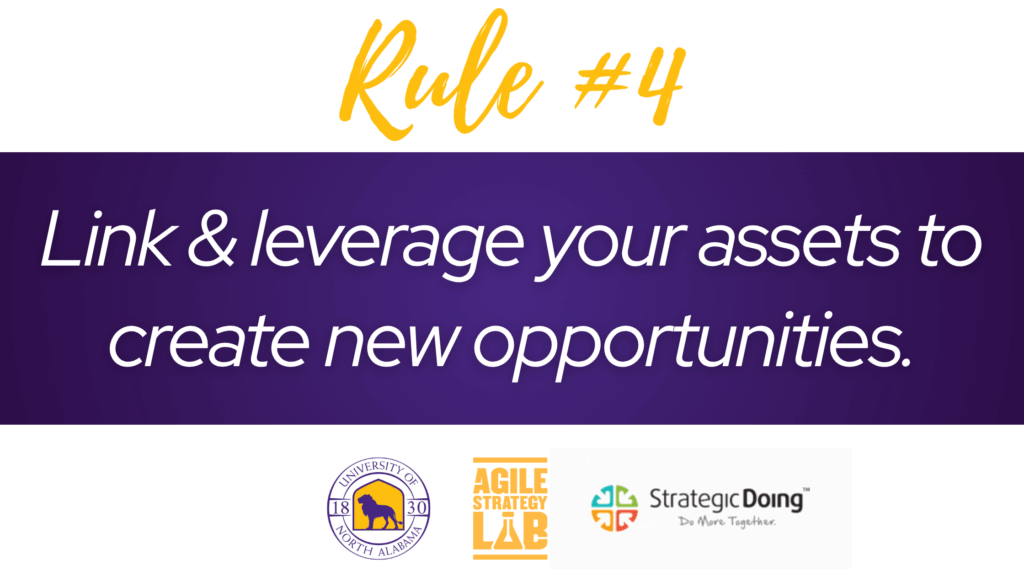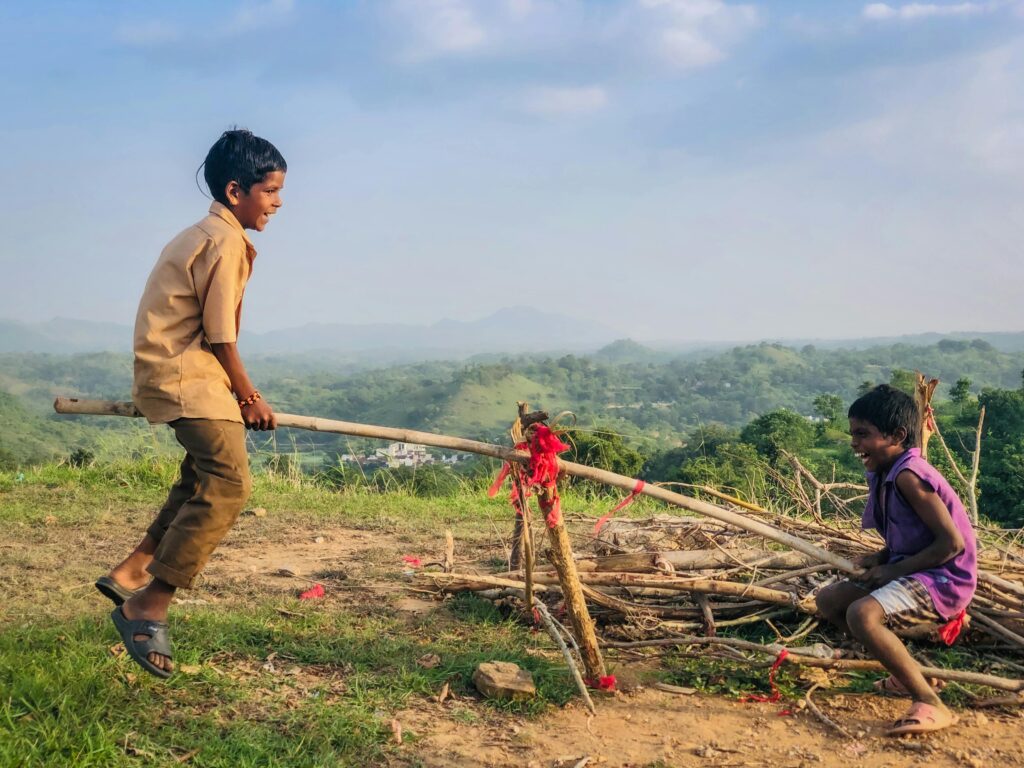A miracle occurs here
This is the fifth post in our 14-week series exploring the 4 Questions and 10 Rules of Strategic Doing, first outlined in this October 2023 blog post. Each week, we dive deeper into one question or rule and share practical ways to put it into action.
[This post builds directly on the last one about assets – catch up with that here].

Watching teams at work is always interesting, but the most rewarding part is when something unexpectedly glorious happens. Or, as one of my favorite cartoons puts it, “a miracle occurs here.”
One of the ways in which that happens is that a brand new idea emerges out of the conversation, even when the team has talked before, an idea that brings together the resources of several people. Of course, it isn’t really a miracle – but it feels almost that way, at least to someone like me who struggles a bit with this particular rule/skill: “link and leverage assets to create new opportunities.”
What is linking and leveraging?

The language of this rule can get in the way, so let’s unpack it. The meaning of “linking” is fairly straightforward – connecting two things. “Leveraging” points to the value that’s created in the linking: there’s some kind of synergy gained by putting the items together. The scientific definition of a lever helps here: the idea of a lever is that it lets you lift something that would otherwise be too hard to move. Putting two assets together brings about something new that wasn’t possible otherwise.
Even if I can’t make the miracle happen, I collect stories of creative linking and leveraging. Here’s a recent one: different ways communities can take an empty pharmacy building – an asset, but not necessarily seen as one – and put it to a new use by building on the assets of others.
Three tips for linking and leveraging
Practice. You don’t even have to be with a team to practice this skill. Pick a couple of objects around you right now, and a purpose, and see if you can find a way to connect the dots. For example: how could a watering can and a cornhole game be combined to enhance my community? One idea: what if we built children’s play spaces (with games) into community gardens (with shared tools)?
Start with a focal asset and build around it. That’s what’s happening with the pharmacy examples. You don’t have to look at a list of 30 assets and find two that might fit together. Choose one, and see if you can find another to enhance it.
Set a timer. One of the things that gets in the way of this process is thinking that we have to come up with great ideas. Set a timer for, say, 10 minutes, and just see how many ideas you can come up with – with no quality bar. It takes the pressure off – and often something good emerges that with a little tweaking really is great.
What if it’s not working?
We say in Strategic Doing and agile leadership that anyone can use any of the 10 rules/skills, but also that no one is good at all 10. This one is hard for me: I can do it (and I’ve gotten better with practice), but not as elegantly as some others – who really can make the miracle occur. It’s one reason cognitive diversity is so important – you want people who collectively can cover all the skills. If your team struggles, maybe you’re all a bit too cognitively similar (we can help you figure that out, using the AEM-Cube [TM]).
Action step: building your team’s skills in this area can make for a fun start-of-meeting activity. Bring a collection of items that really don’t seem to have anything to do with one another, and spend no more than 10 minutes brainstorming ways to put two or more together to keep a child happy on a car trip (or some other not-work-related purpose). If you have more time, bring cardstock, paper clips, duct tape, markers, and rubber bands along and challenge pairs of people to not only come up with an idea, but build and present a prototype.
Learn more: small and under-resourced communities tend to be hotbeds of creativity with this principle. Read about some of the Strategic Doing projects happening in western Kansas.

Liz shepherds the expansion of the Lab’s programming and partnerships with other universities interested in deploying agile strategy tools. A co-author of Strategic Doing: 10 Skills for Agile Leadership, she also focuses on the development and growth of innovation and STEM education ecosystems, new tool development, and teaching Strategic Doing.
